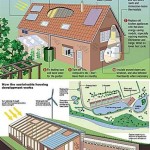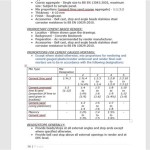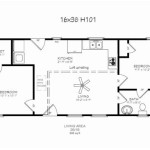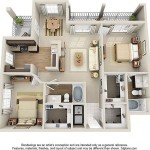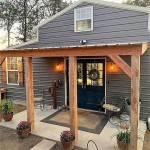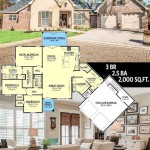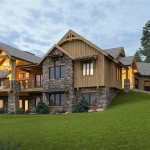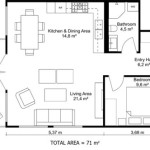Small Cottage House Plans for Narrow Lots
The constraints of a narrow lot present unique challenges and opportunities in residential design. When space is limited horizontally, efficient and creative planning becomes paramount. Small cottage house plans are frequently selected for narrow lots due to their inherent focus on maximizing space utilization and aesthetic charm within a smaller footprint. These plans often prioritize vertical space, incorporating features like lofts, vaulted ceilings, and multi-story designs to compensate for the limited width.
The appeal of cottage-style architecture lies in its inherent warmth and character. Characterized by features like gabled roofs, dormer windows, and inviting porches, cottage designs evoke a sense of comfort and home. When adapted for narrow lots, these elements are carefully integrated to maintain the aesthetic appeal while adhering to spatial restrictions. The resulting designs are often highly efficient and aesthetically pleasing, demonstrating that small spaces can be both beautiful and functional.
Developing a successful small cottage house plan for a narrow lot involves careful consideration of several key factors, including lot dimensions, zoning regulations, orientation, and the homeowner's specific needs and preferences. Each of these elements plays a crucial role in shaping the final design and ensuring that the house not only fits comfortably on the lot but also provides a comfortable and livable environment.
Maximizing Space Efficiency in Narrow Lot Cottage Plans
One of the primary objectives in designing for narrow lots is to maximize space efficiency. This requires careful consideration of the layout and the use of every available square foot. Several strategies can be employed to achieve this goal. Vertical living spaces become essential. This means incorporating multi-story designs to increase living area without expanding the foundation's footprint. Lofts offer additional flexible space that can be used as bedrooms, offices, or living areas. Open floor plans are another effective way to create a sense of spaciousness. By eliminating unnecessary walls, natural light can flow more freely throughout the house, making it feel larger and more inviting.
Clever storage solutions are also critical in small cottage house plans. Built-in shelving, under-stair storage, and customized cabinetry can help to maximize storage space without taking up valuable floor area. Multifunctional furniture, such as sofa beds and folding tables, can further enhance space efficiency by serving multiple purposes.
The efficient use of circulation space is another important consideration. Narrow hallways and landings can minimize wasted space and ensure that every area of the house contributes to the overall livability. Careful planning of the stairwell is crucial as it can take up a significant amount of space, especially in multi-story designs. Spiral staircases or compact stair designs can help to minimize the footprint of the stairwell.
Outdoor spaces can also be strategically incorporated into the overall design. Small decks, patios, or balconies can extend the living space and provide opportunities for outdoor relaxation and entertainment. Vertical gardens can add greenery and visual interest to the exterior of the house without taking up valuable ground space.
Adapting Cottage Style to Narrow Lot Constraints
While maintaining the aesthetic charm of cottage-style architecture is important, it is equally crucial to adapt it to the spatial constraints of a narrow lot. This may involve modifying certain traditional cottage elements to fit within the available space. The roofline, for example, is often a key feature of cottage design. Steeply pitched roofs with gables and dormers are common characteristics. However, in a narrow lot, these elements may need to be scaled down or simplified to avoid overwhelming the house and encroaching on setback requirements.
The exterior materials used in cottage-style homes often include natural elements such as wood siding, stone accents, and brick detailing. These materials can be adapted to fit within the narrow lot context. For example, narrower siding boards or smaller stone veneer can be used to create a more proportionate look. The color palette can also play a role in enhancing the perceived size of the house. Lighter colors tend to make a space feel more open and airy, while darker colors can make it feel smaller and more enclosed.
The placement of windows and doors is another important consideration in adapting cottage style to narrow lot constraints. Generous windows are essential for bringing natural light into the house and creating a sense of openness. However, on a narrow lot, it may be necessary to carefully position windows to maximize light while maintaining privacy. Dormer windows can be particularly useful for bringing light into upper-level spaces without requiring significant wall space. The front door is a focal point of cottage design. A welcoming porch or entry area can enhance the curb appeal of the house and create a sense of invitation. However, on a narrow lot, the porch may need to be smaller or incorporated into the overall design in a more compact way.
Landscaping can also play a crucial role in enhancing the cottage aesthetic on a narrow lot. Small gardens, window boxes, and climbing plants can add greenery and visual interest to the exterior of the house without taking up valuable ground space. A well-designed landscape can also help to soften the lines of the house and create a more inviting and welcoming atmosphere.
Key Considerations for Narrow Lot House Plans
Several key factors must be carefully considered when developing house plans for a narrow lot. These factors include zoning regulations, lot orientation, and interior layout considerations. Zoning regulations dictate the minimum setback requirements, building height restrictions, and other limitations that can significantly influence the design of the house. The homeowner must research and understand these regulations before beginning the design process. Setback requirements, in particular, can significantly limit the buildable area on a narrow lot, making it even more important to maximize space efficiency.
Lot orientation is another crucial consideration. The orientation of the lot relative to the sun can affect the amount of natural light that enters the house, as well as the energy efficiency of the house. Ideally, the house should be oriented to maximize solar gain in the winter and minimize solar gain in the summer. This can be achieved by carefully positioning windows and overhangs. The location of the main living areas and bedrooms should also be considered in relation to the sun's path. For example, south-facing windows can provide ample light and warmth in the winter, while east-facing windows can provide morning sunlight. The prevailing wind direction should also be considered when designing the house. Cross-ventilation can help to keep the house cool and comfortable in the summer, reducing the need for air conditioning.
Interior layout considerations are also critical in narrow lot house plans. The layout should be designed to maximize space efficiency and create a comfortable and functional living environment. Open floor plans are often preferred, as they create a sense of spaciousness and allow natural light to flow more freely throughout the house. The placement of the kitchen, bathrooms, and bedrooms should be carefully considered to optimize functionality and minimize wasted space. Vertical living spaces, such as lofts and multi-story designs, can help to increase living area without expanding the foundation's footprint. Circulation paths should be carefully planned to minimize wasted space and ensure that every area of the house is easily accessible. The placement of doors and windows should also be carefully considered to maximize natural light and ventilation.
Additionally, accessibility should be considered, especially for aging in place. Incorporating features like wider doorways, grab bars in bathrooms, and a zero-step entry can make the house more accessible for people of all ages and abilities.
In conclusion, designing small cottage house plans for narrow lots requires careful planning and creative problem-solving. By maximizing space efficiency, adapting cottage-style elements to fit within the spatial constraints, and carefully considering zoning regulations, lot orientation, and interior layout considerations, it is possible to create beautiful and functional homes that are perfectly suited to narrow lot living.

Simple Narrow Lot House Plans Houseplans Blog Com

Plan 73930 Narrow Lot Cottage Design For Smaller Lots

Cottage Bungalow Plans Simple 2 Bedroom For A Narrow Lot

Plan 063h 0216 The House

Simple Narrow Lot House Plans Houseplans Blog Com

Plan W15035nc Narrow Lot Low Country Cottage Vacation Beach Photo Gallery House Plans Home Floor Layout

2 Story House Plans For Narrow Lots Blog Builderhouseplans Com

The Best 30 Ft Wide House Plans For Narrow Lots Houseplans Blog Com

Narrow Lot Beach Cottage Florida House Plans

Plan 56937 Narrow Lot Craftsman House With 1300 Sq Ft 3 B
Related Posts

